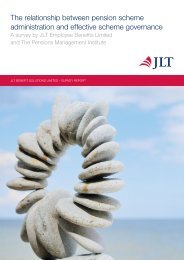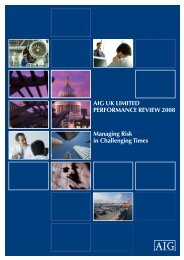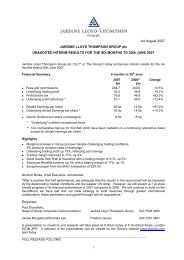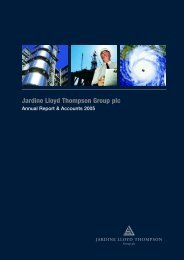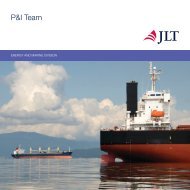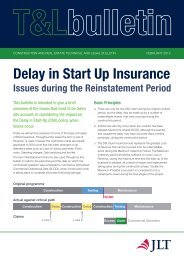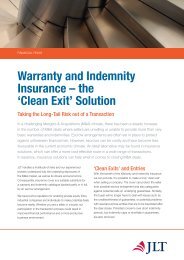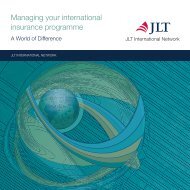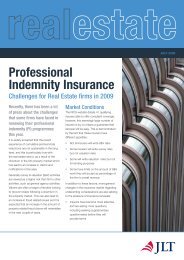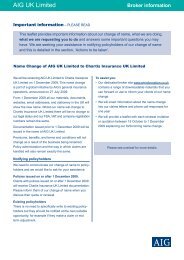Energy Insurance Newsletter - October 2006 - JLT
Energy Insurance Newsletter - October 2006 - JLT
Energy Insurance Newsletter - October 2006 - JLT
You also want an ePaper? Increase the reach of your titles
YUMPU automatically turns print PDFs into web optimized ePapers that Google loves.
21expanding use of subcontractors in thepower and utilities sector, as a further cause forconcern. With increasing amounts of installationand maintenance work now being outsourced,quality checks have begun to suffer andsafeguarding issues such as overuse havebecome a conspicuous problem. Subsequently,the repair resource of major turbine companiesis now stretched beyond capacity, and inconjunction with the further outsourcing ofrepairs it has led to a substantial rise in BI claimsmade by power companies in the last 2 years.So what effect has this had on claimsprocedures and what implications does it posefor the power sector in the future? Within theclaims industry itself there has been a dramaticflight to specialisation in the way claims portfoliosare handled and in the amount of resourcesnow dedicated to power claims. Indeed,the emergence of specialist claims advocacyteams, loss adjusters and accountants coincideswith the growing number of complex and timeconsuming power and utility losses that are nowhandled as a separate and entirely independentelement of the property book.Underwriters are also beginning to approachpower and utility insurance with more scrutinyas the pitfalls of existing policies now becomeapparent. A particular focus has been onthe Long Term Service Agreements (LTSAs) heldbetween companies and the Original EquipmentManufactures (OEMs) of gas turbines. In thepast LTSAs have been used as selling pointsby power companies to drive down premiums,though losses have now highlighted theircontractual weaknesses – not least involvingwaivers of subrogation, the obligation tooutsource repairs to specific locations and afailure to sufficiently cover liquidated damages.Changes in the way claims are managed willobviously have consequences on future insurancepolicies. In a post-loss situation, insurers are nowlooking much more closely at OEMs and howtheir repair resources affect BI timescales. Theyare also becoming less tolerant of where repairsare being outsourced since contractual obligationsin LTSAs can sometimes hinder the speedwith which a turbine is repaired and returnedto its station. Consequently, underwriters maysoon refuse to recognise existing LTSAs infuture insurance policies unless they are partof a negotiated insurance package. This movewould represent the first outright effort by insurersto apply some form of control to the use of suchagreements in a manner that is wholly favourableto OEMs, but it will also impact on the futurepremium rates of power companies.To conclude, increased power losses in thelast two years have thus set in motion a seriesof changes to the way claims are handledin the sector. These developments carryimplications not just for turbine manufacturersbut also for power producers and distributorswho may soon feel the effects of increasinglycomposite claims procedures and more stringentinsurance requirements.



